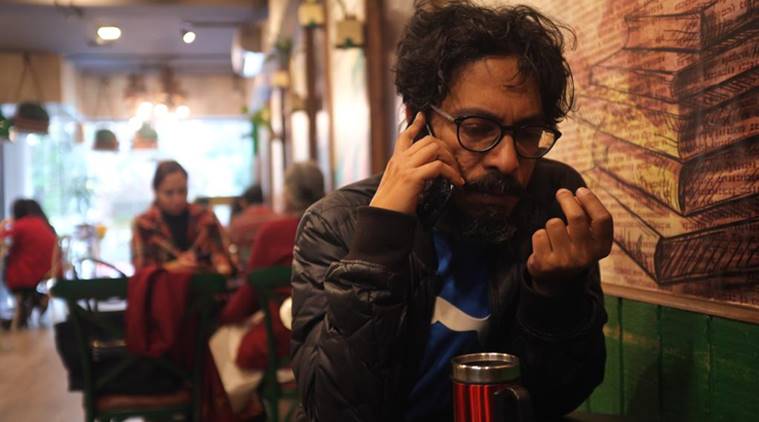Written by Anushree Majumdar |New Delhi |Updated: March 10, 2019 6:00:14 am
The Walker’s Guide to Clues and Signs
In his first museum solo and latest book, graphic novelist Sarnath Banerjee traverses the fertile land between history and imagination

It is 10 pm in Berlin and Sarnath Banerjee has finally managed to put his son, Mir, to bed. It has taken a while for the bedtime story to take hold of the six-year-old, for him to drift off to sleep. What dreams may come? “Inspector Ali, based on Mir, whiles away his time in the swimming pool at Karachi’s Sindh Club but his secret identity is that of a djinn-buster. He must battle an evil Chinese dentist who is a djinn master,” says Banerjee. His voice floats in over the phone from the German capital, rising and dipping as he narrates the story. It isn’t unlike the radio-play-styled fantastical, and sometimes ghoulish tales, that have filled up two rooms on the first floor of the Dr Bhau Daji Lad Museum (BDL) in Mumbai, where, in his first museum solo, the 46-year-old graphic novelist is experimenting with sound and storytelling.
Curated by BDL honorary director Tasneem Zakaria Mehta and co-curated by Himanshu Kadam, Spectral Times, on view at the BDL museum, Mumbai, till May 26, is a three-pronged approach to tell a number of ghost stories; text, illustrations and audio combine and form some kind of memento mori. “When Tasneem and Himanshu approached me about five years ago to come up with work that would engage with Bombay/Mumbai, I was certain I didn’t want to make any obvious political comments, because I’m not an activist. But I feel I can do a lot with ghost stories,” says Banerjee. How so? “Back when its cosmopolitan identity faced powerful populist forces, Bombay gave up very quickly. Now, there’s another city that runs parallel to Mumbai, a phantom city, and sometimes they collide. The ghosts are the voices that went quiet when the takeover happened. And sound demands a different kind of surrender from the visual form.”
“We wanted to push the boundaries when it came to expression. So, I approached Sarnath and asked him if he would explore sound; he readily agreed. It made sense to ask him to look at the city because he’s always been one to capture urban idiosyncrasies so well,” says Mehta.
Tracking down these stories is Banerjee’s fictional, laid-off fact-checker, Birjis Bahri, who conducts interviews with other fictional characters; their stories might be outlandish and macabre but point towards the very real maladies that plague us: loneliness, insomnia, feelings of irrelevance. “These personal histories tell us about the history of where and how we live. People like myths because they are neatly presented and easy to digest. History isn’t popular because history demands an examination of the patterns in the world around you. A society needs to know how to interrogate itself,” says Banerjee. It doesn’t need to be without humour, though: such as the tragedy of Shehri Adamkhor (narrated by Ruchir Joshi with Banerjee playing Birjis), a man struggling with his newly-emerged cannibalistic tendencies — only to be diagnosed with anxiety.
The first listening room offers dim lighting, six chairs around a coffee table, and a glass cabinet where a number of objects from the museum’s permanent collection are on display. When Shehri describes his urge to eat his friends, the painted, disembodied head of a man of unknown provenance stares at the listener. One also can’t stop thinking about the illustration of the man from Tikopia, from James Cowles Prichard’s The Natural History of Man (1848), on display in BDL’s central hall: colonial historians were often quick to term indigenous populations as primal and savage.
“I must credit Tasneem and Himanshu for pulling out texts such as this one and A Description of the East India Coasts of Malabar and Cormandel with their Adjacent Kingdoms & Provinces (1703) by Philip Baldaeus, which inspired the series of drawings on the western Indian coast’s Dutch colonial history, which is a part of Spectral Times. There’s a saying — ‘They won because they had better stories’ — and I wanted to enchant the museum in a way that anybody could form connections and think up their own stories,” says Banerjee, who refers to Neil MacGregor’s A History of the World in 100 Objects as one of the influences for Spectral Times. “That was a legendary approach to look at the world through fragments. But why should white men be the only ones to have the confidence to travel the world and tell us about our history?”






















No hay comentarios:
Publicar un comentario